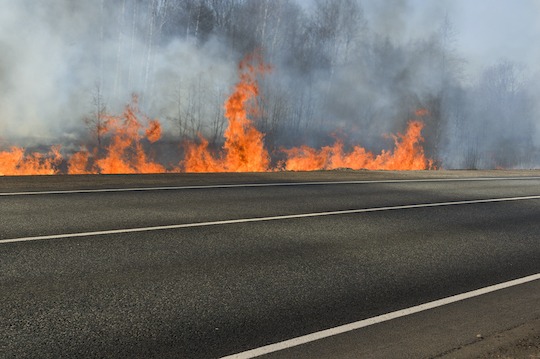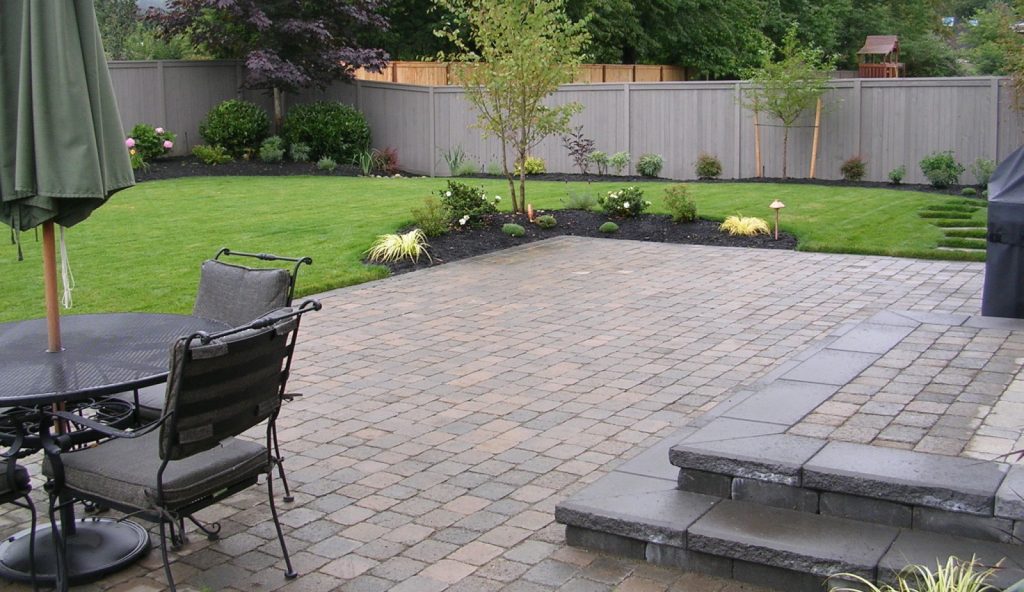Asphalt doesn’t typically burn from wildfires. The biggest risks to pavement from fires are cracks, deformation, landslides – and potholes that come later.
In the aftermath of the many wildfires that have devastated American communities – increasingly so in recent years – the news videos very often show block after block of burned down homes and landscapes reduced to ash. Only a few things remain: chimneys, the occasional untouched structure, denuded tree trunks, mailboxes, and perhaps a torched car sitting in the driveway.
Note the driveways. Together with surviving sidewalks, they provide a contour for what once stood there, before disaster struck. As do the roads that enable news crews and rescue vehicles to access the scene. Why, for the most part, do roads and driveways not burn? Given that asphalt is made of bitumen – basically, a hydrocarbon derived from petroleum – it stands to reason it would be inflammable.
By and large pavement (with a few exceptions explained below) does NOT burn for a few important reasons. One is that so much of what makes up asphalt is non-combustible: little stones and sand represent about 90% of the pavement by volume. Secondly, the ignition temperature for bitumen is 900 degrees (F), however it boils at 600 degrees (F), more likely melting and vaporizing before it would burn. The ground is much cooler than the flames licking at homes, trees, brush, and vehicles, so the brief time a fire is over asphalt it doesn’t heat it to 900 degrees.
So while wildfires that mercilessly burns homes and businesses provide increased business opportunities for home construction companies, the same is neither true of the parking lot or driveway contractor nor the asphalt pavement or concrete contractor that builds roads, sidewalks and patios.
Still, there are situations where an asphalt pavement could at least appear to be burning from hot temperatures. One is when there is an accumulation of oils, such as where a car that routinely leaks fluids is frequently parked. Second is when a vehicle in a tunnel catches fire. The burning vehicle fuel, or perhaps content of the vehicle (e.g., a fuel truck) burning, sometimes with explosions, can intensify in the tunnel leading to melted or even burning pavement (if it reaches 900 degrees). Of course, there is quite a bit of damage and perhaps death that go with such a scenario.
But just because asphalt pavement only rarely burns doesn’t mean wildfires don’t adversely affect pavement. There is damage from heavy fire trucks and other fire fighting vehicles traveling roads that, particularly in rural areas, are not built for such heavy traffic. Compounding it is when the heat of the fires is close enough it makes the pavement more pliable, almost literally melting. The damage is similar to regular highways but with the wear, tear and rutting that otherwise occurs of over years of time.
Other effects of wildfires on asphalt pavement include cracking. As with any temperature swings, this leads to water infiltration into the sublayers of the road, which eventually results in potholes. And as for people who work with asphalt, there is physical risk to anyone breathing fumes from very hot asphalt.
Other impacts on roads from fires are fallen trees and hot embers that make them impassable – a very serious risk to people trying to escape the fire. And in hilly regions, the first heavy rain following a wildfire can results in landslides that block and even destroy roads.
The bottom line is that while roads and driveways made of asphalt pavement might appear to be spared by wildfires, the real damage might come in different forms in the days and weeks that follow.






